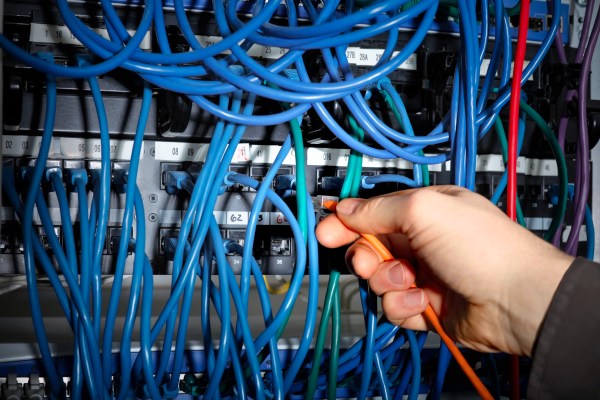Data centers are under constant pressure to process data as quickly as possible. As part of this, data centers need to move data from one point to another at maximum speed. In modern data centers, cross-connects often play a vital role in ensuring fast, reliable data transfer. Here is a quick guide to what you need to know about them.
Understanding cross-connects
Cross-connects are physical cables that directly link different networks within a data center bypassing public internet routes. At present, there are two main types of cross connects regularly used in data centers. These are fiber and copper cross connects.
Fiber cross-connects
Fiber cross-connects use optical fiber cables to establish connections between networks. These are preferred for their high bandwidth capacity and ability to transmit data over long distances with minimal loss.
Fiber optic cables support very high data transfer rates, making them ideal for applications requiring substantial bandwidth, such as data-intensive cloud services and large-scale content delivery networks (CDNs).
Copper cross-connects
Copper cross-connects are typically used for shorter distances within a data center due to higher signal degradation over long distances compared to fiber.
Copper cross-connects are cost-effective for lower bandwidth needs and are often utilized for legacy systems or specific scenarios where high bandwidth is not a critical requirement.
Benefits of cross-connects
Cross connects have become popular in data centers due to the many benefits they deliver. Here are five of the main ones.
High-speed connectivity
Cross-connects enable direct network connections between different entities within a data center, eliminating the need for intermediary routing. This direct pathway significantly increases data transfer speeds by reducing the number of hops data must take.
Enhanced security
Cross-connects offer a private, dedicated link between networks, which enhances security compared to traditional network connections that traverse the public internet. This direct connection reduces the exposure to potential cyber threats, such as man-in-the-middle attacks and data breaches, by minimizing the points of vulnerability.
Improved reliability and performance
Dedicated cross-connects provide a stable and predictable network performance, free from the variability and congestion issues commonly encountered on shared public networks. With fewer interruptions and a more dependable connection, cross-connects ensure continuous and robust data flow. This is essential for maintaining operational integrity.
Scalability
As businesses expand and their networking requirements increase, cross-connects can be easily added or reconfigured to connect new tenants or services without significant disruption. This adaptability is crucial for maintaining seamless operations and supporting continuous growth in a dynamic digital landscape.
Cost efficiency
While the initial setup of cross-connects may involve higher upfront costs, they can lead to long-term savings by reducing the need for expensive bandwidth purchases from ISPs. Additionally, the enhanced performance and reliability translate to lower operational costs due to fewer downtimes and maintenance issues.
Implementing cross-connects
Here is a brief overview of the process of implementing cross connects in data centers.
Assessment of requirements
This includes determining the type of cross-connect (fiber or copper), the required bandwidth, and the distance between the connection points. Technical requirements such as the type of data being transferred and latency sensitivity are also considered.
Planning and design
This includes selecting appropriate cabling (e.g., single-mode or multi-mode fiber, twisted pair copper), determining the physical path the cables will take, and identifying any necessary networking hardware such as switches, routers, and patch panels. Space considerations within the data center are also taken into account.
Procurement of materials
This typically involves purchasing cables, connectors, transceivers, and any other required networking hardware. It’s crucial to source high-quality materials to ensure reliability and performance. Additionally, any specialized tools needed for cable installation and termination, such as crimping tools and fiber optic splicing equipment, are acquired.
Installation of cabling
This involves running cables through designated pathways, securing them to prevent damage, and ensuring they do not interfere with other data center operations. For fiber cross-connects, precise splicing and connector termination are essential to minimize signal loss. Copper installations require careful handling to maintain signal integrity, especially over longer distances.
Configuration of networking equipment
This includes setting up switches, routers, and any other intermediary devices to recognize and manage the new connections. Configuration might involve assigning IP addresses, setting up VLANs, and implementing necessary security protocols.
Testing and validation
This involves checking for continuity, verifying signal strength and quality, and conducting latency tests to ensure the connection meets the required specifications.
Documentation
The final step is documenting the entire setup, including cabling paths, equipment configurations, and test results. This documentation is crucial for future troubleshooting, maintenance, and any subsequent upgrades. The documentation should also set out ongoing maintenance requirements and a process for communicating any issues.







